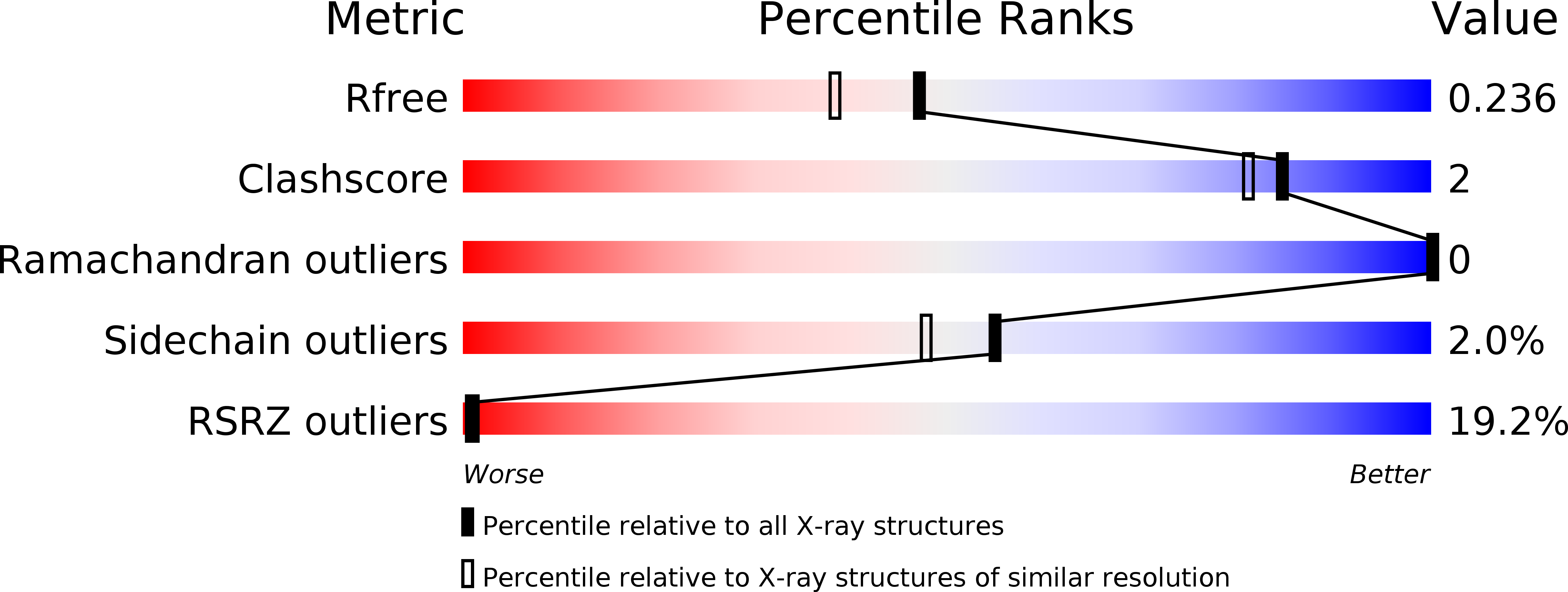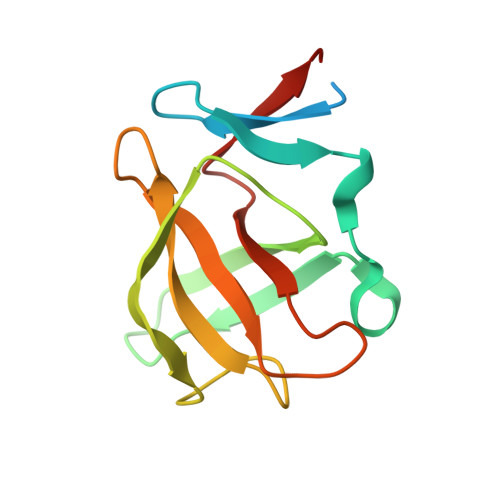Chemical Ligand Space of Cereblon.
Boichenko, I., Bar, K., Deiss, S., Heim, C., Albrecht, R., Lupas, A.N., Hernandez Alvarez, B., Hartmann, M.D.(2018) ACS Omega 3: 11163-11171
- PubMed: 31459225
- DOI: https://doi.org/10.1021/acsomega.8b00959
- Primary Citation of Related Structures:
5OH1, 5OH2, 5OH3, 5OH4, 5OH7, 5OH8, 5OH9, 5OHA, 5OHB - PubMed Abstract:
The protein cereblon serves as a substrate receptor of a ubiquitin ligase complex that can be tuned toward different target proteins by cereblon-binding agents. This approach to targeted protein degradation is exploited in different clinical settings and has sparked the development of a growing number of thalidomide derivatives. Here, we probe the chemical space of cereblon binding beyond such derivatives and work out a simple set of chemical requirements, delineating the metaclass of cereblon effectors. We report co-crystal structures for a diverse set of compounds, including commonly used pharmaceuticals, but also find that already minimalistic cereblon-binding moieties might exert teratogenic effects in zebrafish. Our results may guide the design of a post-thalidomide generation of therapeutic cereblon effectors and provide a framework for the circumvention of unintended cereblon binding by negative design for future pharmaceuticals.
Organizational Affiliation:
Department of Protein Evolution, Max Planck Institute for Developmental Biology, Max-Planck-Ring 5, 72076 T¨¹bingen, Germany.
















